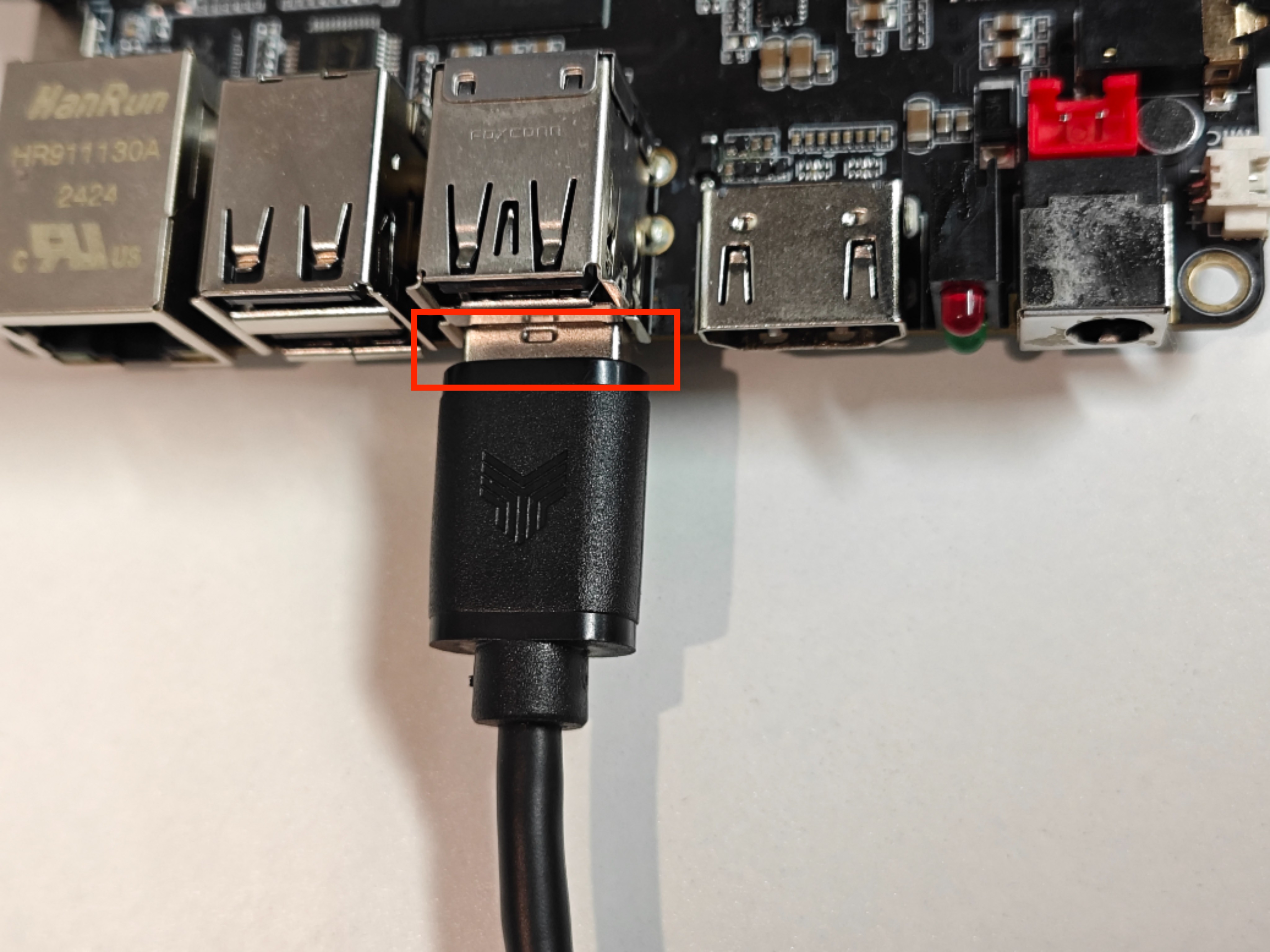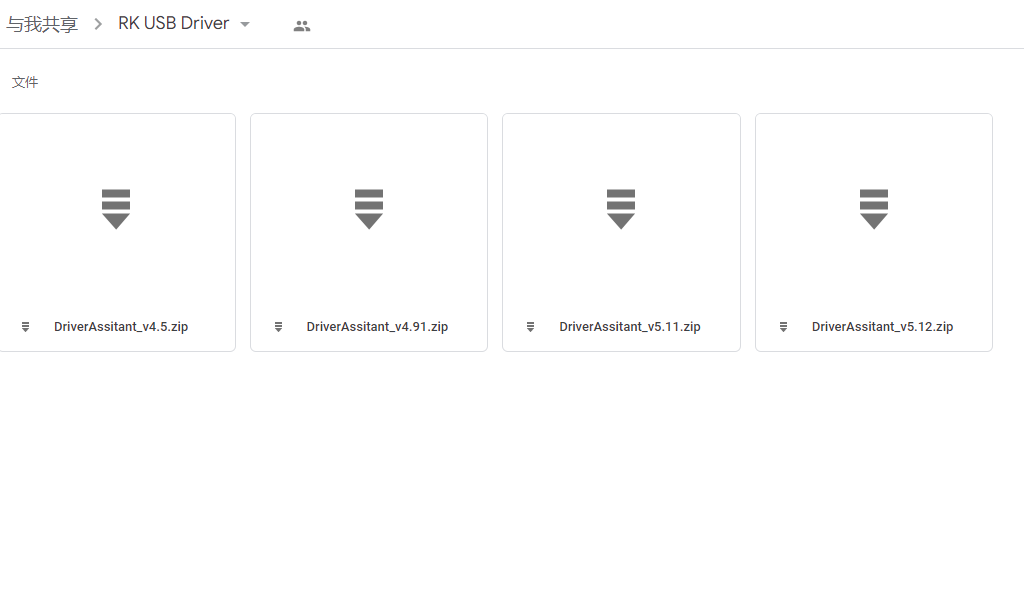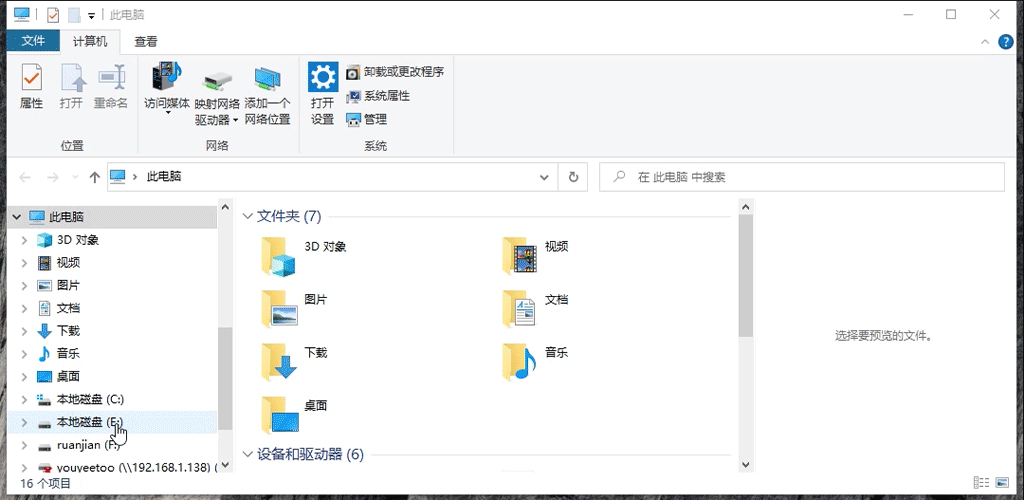¶ preface
¶ Preparation tools
¶ Hardware connection
- As shown in the figure below, the type-A port is connected to the youyeetoo R1 development board, and the other end is connected to the Windows host.

¶ Installing the Rockchip USB Driver
- Download USB driver
- RK USB Driver:
Official Download
http://dd.youyeetoo.cn:5000/sharing/Zc5GRkc1c
Google Download
https://drive.google.com/drive/folders/1MsxDXozDOjmlSvIWEluMBkQvXatZcccx?usp=drive_link
- Download any version of the USB driver compression package for Rockchip

- Extract the downloaded file,click to install the driver.
¶ ADB debugging
- Download adb files
- ADB under windows:
Official Download
http://dd.youyeetoo.cn:5000/sharing/Zc5GRkc1c
Google Download
https://drive.google.com/file/d/1T88RCqrPFE3k-mnfvYO7fG0XmGW3J-8H/view?usp=drive_link
- To use under Windows, you need to install the RK USB driver first, download the adb software, enter the adb directory, change the adb directory column to cmd, as shown in the figure below, start the terminal

- Use the following three commands to obtain the read and write permissions of the board.
adb shell setprop persist.sys.root_access 3
adb root
adb remount
- adb login system
adb shell
- Enter the following command to install the ADB tool:
sudo apt-get install android-tools-adb
- Add device ID:
mkdir -p ~/.android
vi ~/.android/adb_usb.ini
# Add the following line
0x2207
- Add udev rules:
sudo vi /etc/udev/rules.d/51-android.rules
# Add the following line
SUBSYSTEM=="usb", ATTR{idVendor}=="2207", MODE="0666"
- Plug and unplug the USB cable again, or run the following command to make the udev rules take effect:
sudo udevadm control --reload-rules
sudo udevadm trigger
- Restart the ADB server:
sudo adb kill-server
adb start-server
- Use the following three commands to obtain the read and write permissions of the board
adb shell setprop persist.sys.root_access 3
adb root
adb remount
- adb login system
adb shell
¶ adb common command collection
1.Check the connected devices:
adb devices #Note: offline in the returned information means that the device is not connected successfully or has no response, and device is connected
2.Get device serial number:
adb get-serialno
3.Specify the connected device using the command:
adb -s cf27456f shell #Note: cf27456f here is the device serial number, you can query the corresponding serial number through adb devices
4.Check the device model:
adb shell getprop ro.product.model
5.Check bug reports:
adb bugreport
6.Check the adb version information:
adb version
7.Check screen resolution:
adb shell wm size
8.Check screen density:
adb shell wm density
9.Istall app:
adb install test.apk
10.Install apk to sd card:
adb install -r demo.apk
11.To uninstall an application, you need to specify the package:
adb uninstall cn.com.test.mobile
12.Uninstall app but keep data and cache files:
adb shell cmd package uninstall -k cn.com.test.mobil
13.List the package names of all installed apps:
adb shell pm list packages
14.List all package names of system applications:
adb shell pm list packages -s
15.List third-party application package names other than system applications:
adb shell pm list packages -3
16.Windows lists packages with tests:
adb shell pm list packages | find "test"
17.Clear application data and cache:
adb shell pm clear cn.com.test.mobile
18.Start the application:
adb shell am start -ncn.com.test.mobile/.ui.SplashActivity
19.Package information:
adb shell dumpsys package
20.Memory usage:
adb shell dumpsys meminfo
21.Force stop the app:
adb shell am force-stop cn.com.test.mobile
22.View logs:
adb logcat
23.clear log cache:
adb logcat -c
24.reboot:
adb reboot
25.Check the Android system version:
adb shell getprop ro.build.version.release
26.View the top 10 apps that occupy memory:
adb shell top -s 10
27.Copy files from local to device:
adb push <local> <remote>
28.Copy files from device to local:
adb pull <remote> <local>
29.View ADB help:
adb help
30.Obtain the MAC address, the parameters may be different according to the system version:
adb shell cat /sys/class/net/wlan0/address
31.Check out the running Services:
adb shell dumpsys activity services [<packagename>]
* Note: The <packagename> parameter is not required. Specifying <packagename> means viewing Services related to a certain package name, and not specifying means viewing all Services.
* Note: <packagename> does not have to give a complete package name, for example, run adb shell dumpsys activity services org.zhihu, then the package names org.zhihu.demo1, org.zhihu.demo2 and org.zhihu and other related Services will be listed come out.